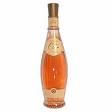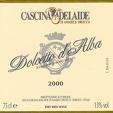 NICE, France — I am about to commit wine writing heresy. Except for rosé Champagne, I am not a fan of rosé. I am not referring only to slightly sweet ‘blush’ wine or white zinfandel, but also to dry rosé. Clearly I am in the minority because there’s a massive amount of rosé consumed around here and, if one is to believe other writers, dry rosé is gaining in popularity in the US as well.
NICE, France — I am about to commit wine writing heresy. Except for rosé Champagne, I am not a fan of rosé. I am not referring only to slightly sweet ‘blush’ wine or white zinfandel, but also to dry rosé. Clearly I am in the minority because there’s a massive amount of rosé consumed around here and, if one is to believe other writers, dry rosé is gaining in popularity in the US as well.
Since I love wine and can often find redeeming character in those with even the lowliest pedigree, it’s unusual for me to dismiss an entire category. But, with some exceptions, Tavel and Lirac spring to mind, rosés are, in a word, innocuous.
The innocuous nature of rosé may come from the saignée method by which many of them are made. In this technique, the winemaker ‘bleeds’ or removes the lightly colored juice early during fermentation of red wine to concentrate the flavor of the remaining juice. Never willing to discard anything, winemakers bottle and sell it as rosé. It’s hard to expect much from a wine whose sole purpose in production was to be removed to enhance the character of another wine.
 It’s easy to see rosé’s appeal during the summer — it’s cool and refreshing. But, on the down side, they frequently fail to stand up to the robust garlic-herb-olive flavors in Mediterranean food.
It’s easy to see rosé’s appeal during the summer — it’s cool and refreshing. But, on the down side, they frequently fail to stand up to the robust garlic-herb-olive flavors in Mediterranean food.
My summer substitute for rosé is a chilled — not ice-cold — red wine. Not any red will work because chilling brings out astringency in the tannins. But there are plenty of low tannin red wines suitable for chilling that also balance the forceful flavors of the region’s food.
You can start with the red wines of Provence, such Château Minuty (even I admit they also make a lovely rosé, full of character) or others labeled Côtes de Provence. Many of the red wines from Bandol take a chill nicely. Perhaps not the top labels, which have substantial tannins when young, but many of the less prestigious names are fine for the ice bucket.
 Other parts of France, such as Beaujolais, and Italy’s Piedmont — think Barbera or Dolcetto — produce low tannin wines suitable for 45 minutes in the refrigerator before serving.
Other parts of France, such as Beaujolais, and Italy’s Piedmont — think Barbera or Dolcetto — produce low tannin wines suitable for 45 minutes in the refrigerator before serving.
Perhaps my colleagues here at WRO, Paul and Marguerite, who routinely perform thoughtful evaluations of food and wine pairings, would like to put my theory to the test in one of their future columns. But since I know them to be fans of rosé, I suggest they use black glasses to obscure the color of the wine.
2
